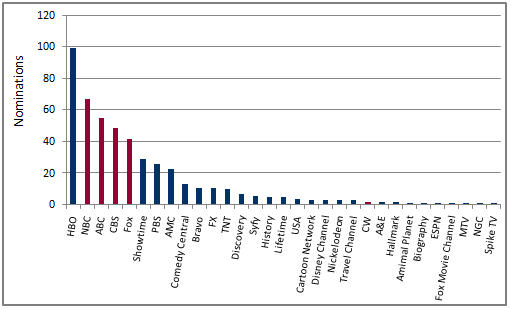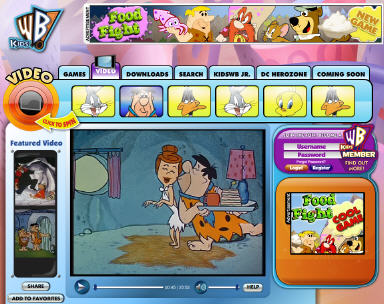-
Anystream Lands Hearst-Argyle and Brings New Competition in Video Management Space
Anystream, a long-time player in video transcoding, is announcing that its Media Lifecycle Platform has been implemented by 11 of Hearst-Argyle's 29 owned and operated TV stations.
The move suggests even more vigorous competition is coming to the video management/publishing space where players like thePlatform, Brightcove, Maven, ExtendMedia, PermissionTV, Akamai (StreamOS), WorldNow and others have focused.
I sat down with Anystream (note, a periodic VideoNuze sponsor) president Bill Holding and founder/chairman Geoff Allen recently to learn more about their expansion strategy.
Anystream is well-known in the digital media space as it Agility transcoding platform is deployed in over 700 companies. Leveraging this base of relationships and its knowledge of customers' work flows, Anystream is
 now "moving north" by focusing on the video management layer. The core technology comes from Anystream's 2007 acquisition of Cauldron Solutions, which has been built out, renamed as Velocity and integrated with Agility.
now "moving north" by focusing on the video management layer. The core technology comes from Anystream's 2007 acquisition of Cauldron Solutions, which has been built out, renamed as Velocity and integrated with Agility. Anystream's new, broader positioning rests on its belief that the video "Produce-Manage-Monetize" lifecycle elements are deeply linked, and that ultimately a comprehensive, integrated solution will be prized by media companies serious about scaling their broadband video businesses. At the manage layer specifically, Velocity focuses on rights, scheduling, packaging, syndication and asset tracking.
Anystream believes metadata it gains access to, at the start of the video lifecycle through its transcoding role, is a unifying value driver in the video management and monetization phases.
Hearst-Argyle clearly saw the benefits of this approach, citing Anystream's metadata management as opening up new content re-use opportunities and creating competitive advantage. In the press release, Joe Addalia, H-A's director of technology projects, said H-A has cut its production and distribution to online channels "from 30 minutes to 3 1/2 minutes."
I continue to be impressed with how many companies are staking a claim in the broadband video management/publishing space. I'm constantly trying to discern the real competitive differentiators that separate industry players. Like many of you, I often find the landscape quite blurry, with overlapping capabilities. Each player tends to cite its traditional competencies as being the best building blocks from which to build a full scale management/publishing platform.
While it's tempting to say "they can't all be right," the fact that so many players are finding market success today indicates that content owners are not monolithic in their specific requirements and that a giant game of matchmaking seems to be occurring between content owners and video management providers. One day there may be a consensus on who truly has the "best" management platform, but for now that day seems to be far off.
What do you think? Post a comment and let us all know!
Categories: Broadcasters, Technology
Topics: Akamai, Anystream, Brightcove, ExtendMedia, Hearst-Argyle, Maven, PermissionTV, thePlatform, WorldNow
-
Sezmi - Building B Portends Major Disruption to TV Industry
Builidng B, the stealthy, well-funded startup I wrote about last December, is at last pulling back the curtain today, unveiling "Sezmi" as its new name and releasing details of its end-to-end system for delivering traditional television programming and broadband video directly to the TV.
I got a preview of Sezmi (pronounced "SaysMe") at a private briefing with company executives at NAB 2 weeks ago. Upfront I want to offer a huge caveat that I only saw the system in demo mode so I cannot vouch for its performance in actual, scale situations. That said, if the system works as described, then I
 would rank Sezmi as the most promising approach I've yet seen for bridging the currently separate worlds of broadband video and TV. Sezmi could well be the first bona fide broadband/on-demand competitor to cable TV and satellite operators.
would rank Sezmi as the most promising approach I've yet seen for bridging the currently separate worlds of broadband video and TV. Sezmi could well be the first bona fide broadband/on-demand competitor to cable TV and satellite operators.First things first. Sezmi should not be confused with broadband appliances seeking to bridge broadband and TV, such as AppleTV, Vudu, Akimbo and others. I am an avowed skeptic of all of these. Sezmi does not focus on delivering broadband video as an add-on to existing cable/satellite subscriptions. Rather, it is looking to replace these providers by combining the best of the traditional linear broadcast/cable network model with broadband, on-demand, digital video recording, personalization, social networking and ease-of-use that many of us now consider second nature.
Sezmi is a complete system, providing an antenna, set-top box and remote control to the consumer. One of Sezmi's key innovations is "FlexCast," which leverages multiple delivery networks to get broadcast/cable channels and broadband video into the home. In fact, the traditional channels are the bedrock of Sezmi's service offering, enabling it to be a true competitor to incumbent video providers. Sezmi leases digital broadcast space from local stations to efficiently deliver these channels, which can be watched in either familiar linear mode, or in recorded on-demand mode (note the initial set-top box comes with 1 terabyte of storage, soon to be 2 terabytes). For broadband video, it makes use of the existing broadband ISP connection.

 Sezmi creates an entirely new, and exciting user experience that digital media enthusiasts will instantly recognize, and I believe, value. These include the remote control with an iPod-like scroll wheel, no numeric keypad and one-touch personalization for family members. There is also the on-screen navigation, which groups shows by episode, and presents them in personalized home page-like settings. And there's targeted contextual advertising, allowing familiar click-through options.
Sezmi creates an entirely new, and exciting user experience that digital media enthusiasts will instantly recognize, and I believe, value. These include the remote control with an iPod-like scroll wheel, no numeric keypad and one-touch personalization for family members. There is also the on-screen navigation, which groups shows by episode, and presents them in personalized home page-like settings. And there's targeted contextual advertising, allowing familiar click-through options.Recognizing that a direct-to-consumer approach would be costly and slow to scale, Sezmi has adopted a partner-centric go-to-market strategy. It is working with ISPs, telcos and others who seek entry to the video services business. Buno Pati, Sezmi's CEO/co-founder told me he expects consumer pricing would be approximately half of today's digital cable tier, including HD and DVR capability. I suggested that might imply a $35-40 per month fee. While not confirming that number, he said he wouldn't disagree with my estimate.
If Sezmi can work out its economics with partners and deliver that pricing to consumers, it would be a very compelling alternative to today's cable/satellite offerings. The key is to whom? In my briefing many types of customers were mentioned: analog subscribers, new HD TV purchasers, over-the-air households, and others. Given how ground-breaking it service is, in my opinion Sezmi needs to go after digitally savvy audiences first.
Today the company is announcing only that it is commencing trials in pilot markets and expects commercial launch with partners later this year. All eyes will be on Sezmi to see if it can execute on its bold vision. If it does this is a company that has major disruptive potential.
(Note - very coincidentally, Sezmi CEO/co-founder will be on my Digital Hollywood panel next Wed, May 6th at 10:45am)
Categories: Cable TV Operators, Devices, Startups
Topics: Building B, SezMi
-
Gotuit Launches Video Metadata Authoring Tool
Gotuit, whose technology allows for indexing longer-form content into individual scenes based on their metadata, is today announcing "VideoMarker Pro." This gives content providers the choice of indexing their video themselves, rather than relying on a service relationship with Gotuit, as customers like SI, Major League Soccer, Fox Reality and others traditionally have.
As I wrote last November, I've been very bullish about broadband's ability to create searchable segments
 carved out of longer-form programming. A perfect example of this is what TheDailyShow.com has done, offering 19,000+ clips from all of the show's episodes. Searchable clips create a powerful new user experience leading to more video consumed. This in turn means more ad inventory which is also ripe for contextual targeting.
carved out of longer-form programming. A perfect example of this is what TheDailyShow.com has done, offering 19,000+ clips from all of the show's episodes. Searchable clips create a powerful new user experience leading to more video consumed. This in turn means more ad inventory which is also ripe for contextual targeting.The big problem with creating searchable clips has been that without the proper tools it would be painfully time-consuming. Worse is that a large library would spawn thousands of clips that would need to be managed. While TheDailyShow.com took the plunge, others have been reluctant, thereby leaving a lot of highly monetizable longer-form video locked in its original state.
Enter VideoMarker Pro. Last week, Patrick Donovan, Gotuit's VP of Product Management, demonstrated for me how a show such as "Lost" would be indexed.
The starting point is for a producer to set up the show's "Attributes" or key descriptors, based on how users might be expected to search (e.g. by character, plot line, topic, funniest lines, etc.) for specific clips. Once done, the show plays in a side panel while the editor uses the tools to mark "Time-In" and "Time-Out" points, and to assign attributes to that scene. Once a scene is marked up, the editor clicks save and quickly moves on to the next one.
The whole process is dead-simple, enabling an intern or offshore partner to crank out clips quickly and accurately. Patrick estimates the whole indexing process takes 25-30% of real time (e.g. a typical 1 hour show running 44 minutes would take less than 15 minutes to index.) When you do the math, you realize it would be ridiculously cheap to index an entire season or even multiple seasons. (This is particularly relevant given the recent emphasis on offering classic TV content online - see yesterday's Warner Bros post as an example.)
There are multiple ways to present the index, using thumbnails, playlists and search. In fact VideoMarker Pro is actually creating "virtual" clips by sending an XML message to the CDN with instructions to play the video at its specified time points. This creates a lot of flexibility, especially for syndicating clips to partners. There's no clip inventory to manage, transfer and update.
VideoMarker Pro is another example of how the technologies sprouting up around broadband video allow content providers to extract ever-growing value from their original investments.
What do you think? Post a comment and let everyone know!
(Disclaimer - I have a very minor advisory role with Gotuit)
Categories: Technology
Topics: Gotuit, TheDailyShow.com, VideoMarker Pro
-
New Warner Bros' Sites Showcase Broadband's Abundance
The news yesterday that Warner Bros Television Group plans to launch TheWB.com as an online outlet to offer its catalog of popular programs and KidsWB.com to house its animated favorites are further reminders that broadband's infinite shelf space creates all kinds of new opportunities for broadcasters and studios ready to experiment and be creative.
I regard these moves as the latest evidence that industry players are beginning to understand how programming in a broadband world differs from business-as-usual approaches. If there is one word that captures the essence of the traditional world it would be "scarcity." Scarcity of time slots, distributors, eyeballs, financing, brands, advertising dollars, ideas, etc. The whole broadcasting and studio paradigm is built on a zero sum - and legitimate - idea that only a very small handful of all creative pursuits can succeed at any one time.
Broadband explodes the scarcity model, introducing a world of abundance in which every scarcity constraint is alleviated or erased. Abundance thinking has guided online retailers for years: offering incremental inventory is dirt-cheap, and if made easily discoverable, it will find its buyers. In fact, as the incongruous popularity of "Arrested Development" on Hulu already shows, latent demand for catalog programming can actually be quite strong.
Evidence is growing that other video providers also understand the abundance concept. Recently other networks and studios have also launched their own efforts to monetize catalog programming. At my recent NAB panel, the head of CTV's 2012 Olympics coverage noted that ALL Olympic activity will be available for online viewing (their mantra is "Every Second Counts"). Also at NAB, I was introduced to a stealthy new initiative to make available high-quality archived video that has never been available online. I expect plenty more examples to come.
To be sure, broadband's abundance creates all kinds of new challenges: More audience fragmentation. New promotion and user navigation issues. More monetization complexity. New operational and management tasks. And so on.
Yet broadband's abundance should be viewed as a direct challenge to the historical scarcity model on which broadcasters' and studios' strategies have long been built. Industry participants who recognize the new world order and embrace it will be best-positioned to succeed.
What do you think of how broadband's abundance changes things? Post a comment and let everyone know!
Categories: Broadcasters, Studios
Topics: KidsWB.com, TheWB.com, Warner Bros
-
Eyespot Shifts Focus to Network Model and Mid-Tail Video Providers
Another sign of how quickly broadband video companies are adapting themselves to market conditions: Eyespot, which started by providing video editing capabilities to users of big branded web sites has evolved its focus to a network model, specializing in mid-tail sized video providers. CEO/co-founder Jim Kaskade explained their shift to me and why it's paying off.
Eyespot's core capability remains providing video editing and sharing tools, but it is now also offering them in a self-serve model, enabling small-to-mid sized sites to quickly get up and running. Jim sees at least 2 clear differentiators for Eyespot:
First, for sites which want to offer a user-contributed video capability, Eyespot addresses all the complexities such as handling multiple file formats, offering strong moderation and monetization. ExpertVillage is a good example of a site benefiting from this approach. EP's myriad "experts" contribute their how-to videos to the site using Eyespot's tools. In this model, Eyespot is fundamental video infrastructure, powering all of the video publishing at the site.
Depending on the business model the provider chooses for the user-contributed capability, all of their video can be included for syndication to other sites by Eyespot to others in the network. This includes options for delivery to mobile devices. Eyespot monetizes the network, currently at $4-8 CPM. In addition to powering user contributions, this capability is also appealing for mid-tail providers who just intend to upload and manage their own video.
A second differentiator, for providers who don't necessarily want to allow user uploads, is Eyespot's core video studio. In this offering, content providers offer their own library of media assets for users to mix and publish. NBA.com is an example of this implementation. When you go to NBA.com, in the video tab, there's an option for "NBA Highlight Mixer," where the user will find media that NBA has offered for mixing. A gallery of users' mixes is displayed, along with tools to share and embed your mixes. In this example, Eyespot augments the NBA's other video initiatives powered by Akamai's StreamOS.
Jim explained that the payoff from offering video personalization is in driving more video views and hence more ad revenue. Jim explained that a typical site might get 10 video views per unique visitor per month, while Eyespot-powered sites get around 80.
I've been bullish for a while about the potential of user contributions and editing, yet it seemed like the market was slow to catch on. With Eyespot's new approach making access to its tools much easier, this will hopefully accelerate adoption.
Categories: Technology, UGC
Topics: ExpertVillage, Eyespot, NBA
-
Nike's "Sixty-Million Dollar Man" is Well Worth a Look
A short piece in Brandweek caught my attention yesterday. It was about a new video entitled "The Sixty Million Dollar Man," produced by Phoenix Suns point guard Steve Nash to promote a Nike shoe that Nash has worn since February called the "Trash Talk." The shoe is environmentally-friendly as it is made out of leather scraps and waste. The release of the video coincided with Earth Day.
The video is well-worth checking out, not only because it is a very clever spoof of the original "Six Million Dollar Man" program from 30 years ago and has amazing special effects, but also because it demonstrates the continuing embrace of broadband by brand marketers. This is a trend that I've been covering for a while on VideoNuze (check out here and here for more).
Of course, Nike has long been one of the most innovative advertisers, mixing subtle brand promotion with compelling examples of athletic achievement. The new 90 second Nash spot, available on YouTube, follows Nash's first effort, entitled "Training Day," which itself now has about 300K views on YouTube are in keeping with these traditions. (Apparently Nash is an avid film-maker and also an environmentalist.) In both spots, the only Nike promotion is a swoosh in the closing frame. Both are great examples of sponsored, yet engaging entertainment that would be very expensive to execute on-air.
Broadband is opening all kinds of new doors for brand advertisers. Initiatives seem to fall into 2 buckets: original entertainment/informative videos like the Nash spots, and user-generated contests like the recent TideToGo and Heinz Top This efforts. I expect we'll see a lot more broadband experimentation from brands to come.
Categories: Brand Marketing, Indie Video, Sports
-
ClipBlast Playbox: Video Search and Syndication Wrapped in One
ClipBlast, an up-and-comer in video search, has quietly introduced its "Playbox" feature, which neatly wraps together video search and video syndication, two key mechanisms for increasing video usage. Gary Baker, ClipBlast's CEO gave me a sneak peek a few weeks ago and a demo earlier this week.
Playbox's key differentiator is that it provides a unified video experience across different video providers, while keeping users on-site. When clicking on any result which has video from the web that's embeddable or video from providers that ClipBlast has deals with, a floating window opens on top of the web page.
Playbox plays multiple video format (Flash, WMP, QuickTime) and correctly re-sizes each for the Playbox window. When you click back on the site and select another video it seamlessly loads right into the Playbox window. All of this contributes to a highly unified experience.
While that's pretty cool, the more interesting aspect of Playbox is that it drives frictionless video syndication. Here's how it works:
As ClipBlast distributes its video index and search bar to other sites, Playbox comes along (or not if the site declines it). This means that as ClipBlast's video search migrates from its site to the far corners of the web, Playbox's video syndication spreads too.
Here's an example: say you run a popular blog about auto racing and choose to offer ClipBlast video search and Playbox. A user of the site types "Danica Patrick" into the ClipBlast search bar (for those who missed it, she was the first woman to win an Indy car race, last weekend in Japan).

If the user clicks on the first result with a "Play" icon (with a rollover that says "play this video directly"), Playbox opens. In this example, the first video is from ESPN. When it's over, the user can click the "Details" button and a list of additional, related videos are displayed, from other providers such as AP, VidLife, YouTube, YES Network, etc. The point is that Playbox provides an easy-to-use container where related 3rd party videos can be played without the user ever leaving the auto racing blog.
So Playbox gives videos new exposure throughout the web. Again, if providers code their ads into the file, more views = more revenue. The Playbox window also shows small display ads at the bottom, which ClipBlast monetizes through ad networks. Depending on the video and search term, these slots lend themselves to contextually-targeted ads.
Playbox marries video search and video syndication, and is another mechanism for how video is going to be widely distributed around the web. I expect more of these initiatives to come.
Categories: Video Search
-
TV's Primetime Emmys Seek Interactive Entries
Further confirmation that the TV landscape is evolving is The Academy of Television Arts & Sciences' (the organization that puts on the primetime Emmys) recent announcement that the Primetime Emmy for Interactive Media will include two new areas of competition that tie user experience to either fiction or non-fiction programming.
This is not a technology award, but rather an award that honors outstanding creative achievement. In
 addition to having been distributed by the traditional broadcast, satellite or cable platforms, the recipient of this award could have been born from a variety of new platforms including broadband and mobile, or a combination of platforms.
addition to having been distributed by the traditional broadcast, satellite or cable platforms, the recipient of this award could have been born from a variety of new platforms including broadband and mobile, or a combination of platforms.Why is this newsworthy? Because the door is now open for many broadband video-only programmers, such as Revision3, TikiBarTV, or perhaps LonelyGirl15, who haven't yet inked a deal with a studio, network, or pay TV operator. As long their content fits the interactive criteria, then programs like these could be submitted and become an Emmy contender. A seismic change from yesteryear's Emmy considerations.
To qualify, entries need to be an original program or series that were deployed commercially between June 1, 2007 and May 31, 2008. The Interactive Media Peer group will be judging in June and will select 5 finalists in the aforementioned categories. The Peer Group is looking for submissions that have participatory interactive features and demonstrate overall creative excellence, interactive storytelling, and a compelling user experience.
If you're reading this and you've produced a program or a series that fits this description, the May 30th deadline is fast approaching. And if you don't have content that fits these qualifications, get your game on for 2009. These are exciting times where the democratization of being a Primetime Emmy winner may no longer mean that you're of network ilk. Cool!
Categories: Broadcasters, Events, Indie Video
Topics: Emmys





